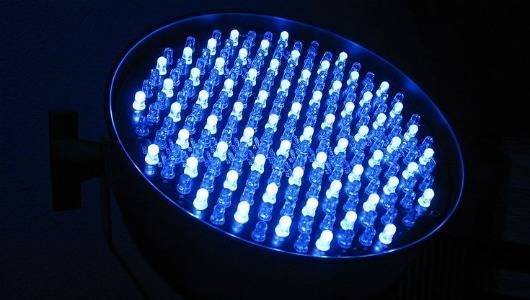Roselectronics has developed a deep-sea light device
The luminaire, which received the designation "TS-12", was developed at the St. Petersburg Research and Development Institute of Television, JSC in order to ensure the operation of television underwater systems. At the same time, the device can be used on submarines and self-propelled vehicles, as well as to illuminate the working area of divers.

The working body of the device consists of seven clusters of seven LEDs of type XLD in each. The spectral composition consists of white light, if necessary, can be changed, for example, to blue-green, or blue light. The illumination range at 70 W power is 2 500 lux per 1 meter in the air. Supply voltage - 24 V, current consumption - 2,5 A.
The angle of illumination generated by the device is 40 degrees. At the same time, it is possible to install secondary optics, which allows to reduce the angle to 30 degrees in order to increase the range of illumination. The weight of the lamp - 2,8 kg, with the use of secondary optics - 3,3 kg.
The case diameter is 170 mm, the diameter of the glass in the case is 150 mm. Glass thickness - 15 mm.
As previously reported, the holding Roselektronika produces a number of light semiconductor devices for the needs fleet. In particular, the Tomsk Scientific Research Institute of Semiconductor Devices has developed an LED module for the SS328E marine lamp for two power options - 220 V and 30-40 V. In addition, Moscow Optron JSC has developed a prototype lighting system based on the use of laser radiation and a remote phosphor . The development eliminates the danger of a fire or explosion due to a spark when the power is turned on and is able to work in aggressive environments, as well as under water.
The devices will be presented at the VIII International Naval Salon, which will be held in St. Petersburg from 28 June to 2 July. The integrated exhibition of electronics electronics - pavilion 7, stand 701.
Information